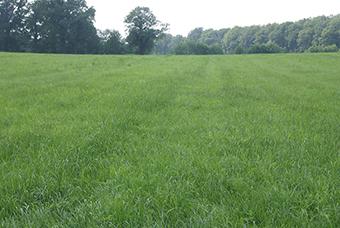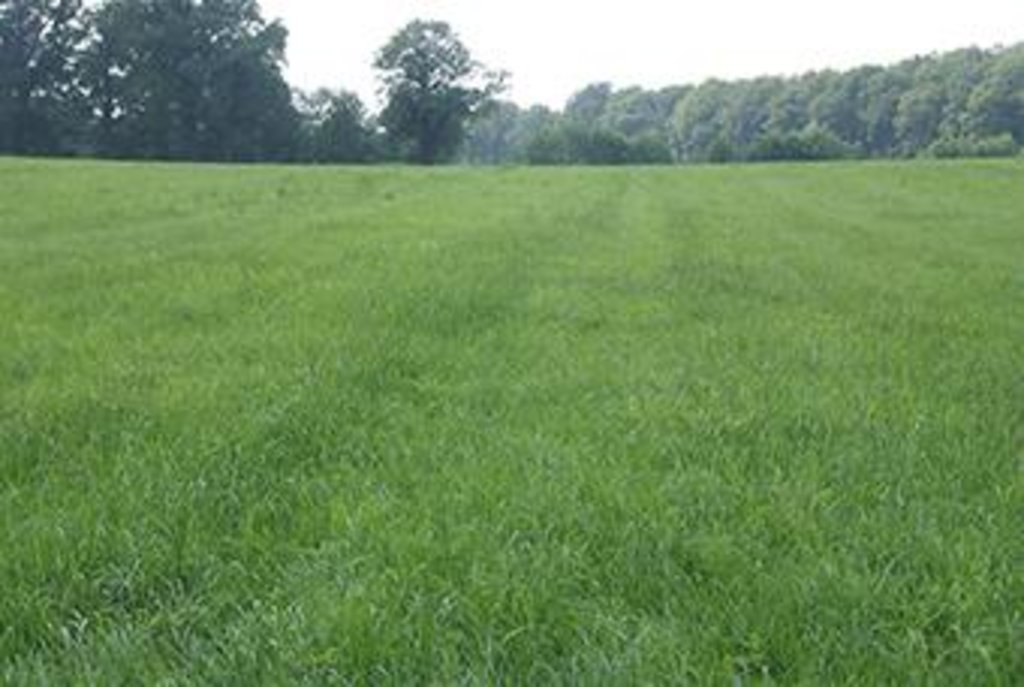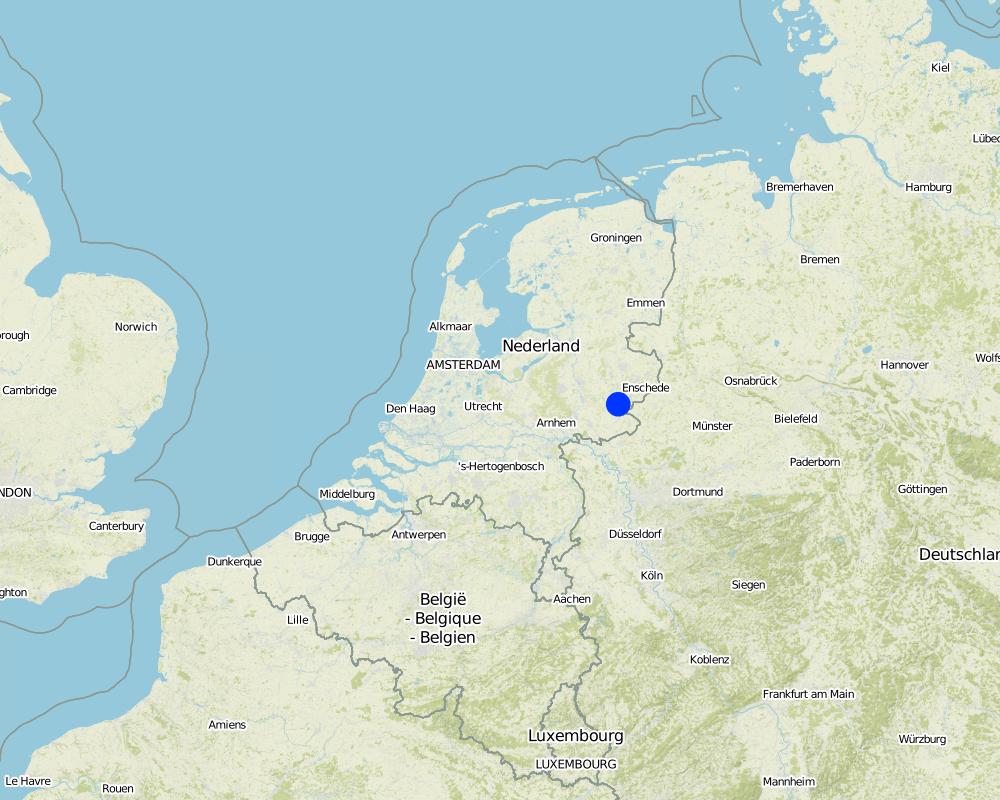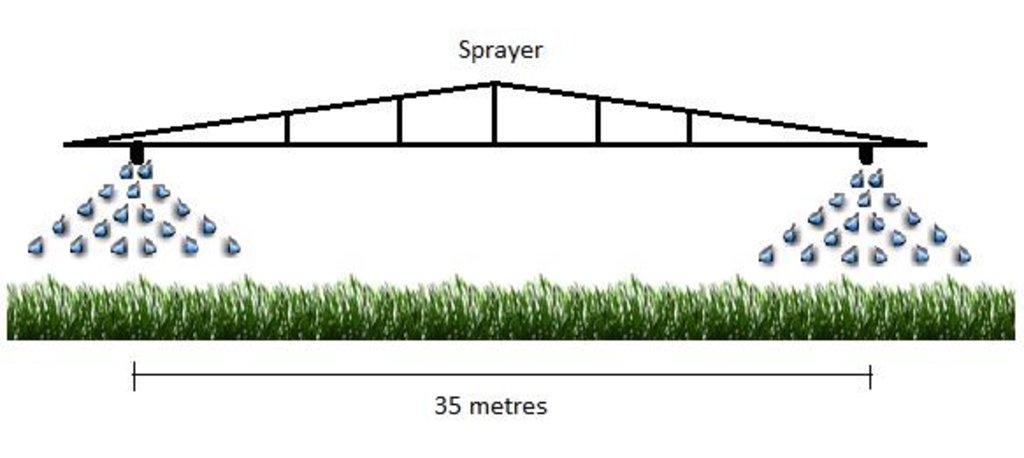Humic acid application [Netherlands]
- Creation:
- Update:
- Compiler: Jason Stuka
- Editor: –
- Reviewers: Fabian Ottiger, Alexandra Gavilano
Toepassing van humuszuur (Dutch)
technologies_1254 - Netherlands
View sections
Expand all Collapse all1. General information
1.2 Contact details of resource persons and institutions involved in the assessment and documentation of the Technology
SLM specialist:
Smit Annemieke
Wageningen Environmental Research (Alterra)
Netherlands
SLM specialist:
Rienks Willem
Rom3D
Netherlands
SLM specialist:
Leever Henk
HOEDuurzaam
Netherlands
Name of project which facilitated the documentation/ evaluation of the Technology (if relevant)
Preventing and Remediating degradation of soils in Europe through Land Care (EU-RECARE )Name of the institution(s) which facilitated the documentation/ evaluation of the Technology (if relevant)
ROM3D - NetherlandsName of the institution(s) which facilitated the documentation/ evaluation of the Technology (if relevant)
Hoe Duurzaam - NetherlandsName of the institution(s) which facilitated the documentation/ evaluation of the Technology (if relevant)
Wageningen Environmental Research (Alterra) - NetherlandsName of the institution(s) which facilitated the documentation/ evaluation of the Technology (if relevant)
Provincie Gelderland - NetherlandsName of the institution(s) which facilitated the documentation/ evaluation of the Technology (if relevant)
Vitens - Laat Water Voor Je Werken - Netherlands1.3 Conditions regarding the use of data documented through WOCAT
The compiler and key resource person(s) accept the conditions regarding the use of data documented through WOCAT:
Yes
1.5 Reference to Questionnaire(s) on SLM Approaches (documented using WOCAT)
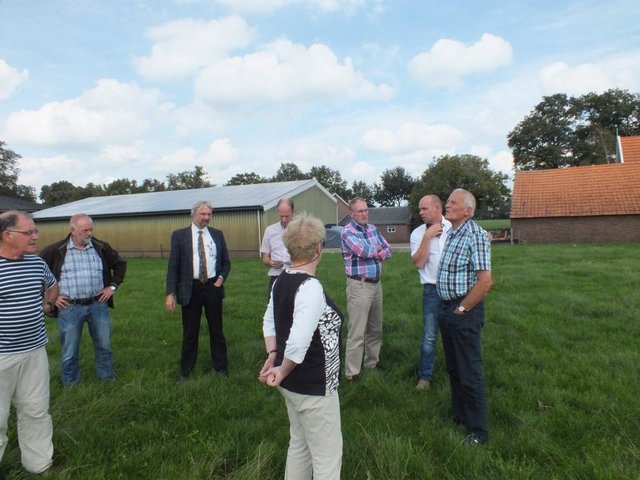
Regional process, social innovation [Netherlands]
Social innovation for sustained soil organic matter, clean drinking water and sustainable crop production
- Compiler: Simone Verzandvoort
2. Description of the SLM Technology
2.1 Short description of the Technology
Definition of the Technology:
Humic acid application is a technology that allows the farmer to supply organic matter to the soil, without supplying additional nitrogen and phosphorus.
2.2 Detailed description of the Technology
Description:
The application of humic acids to the soil is a way to supply organic matter, without supplying additional nitrogen and phosphorus, which is disadvantageous for farmers under the current manure legislation, since this imposes a threshold for the entry of nitrogen and phosphorus.
Humic acids stimulate the binding of K, Mg, Na, Ca and trace elements to the soil complex, causing the soil to supply more nutrients to the plant roots. umic acids fix iron and calcium particles, preventing these to fix phosphorus. This enables the release of phosphorus for take up by plant roots.
Purpose of the Technology: Increasing grass yield and nutritional value of grass.
Establishment / maintenance activities and inputs: Solution is applied with a tractor sprayer approximately 33 metres apart. Only small strips are applied as this is a test by farmers. Strips are shifted and rotated each year. They spray with a density of 60 L/ha. Width of strip is only the width of the sprayer.
Natural / human environment: Humic acid is a by-product of the water company's treatment of drinking water.
2.3 Photos of the Technology
2.5 Country/ region/ locations where the Technology has been applied and which are covered by this assessment
Country:
Netherlands
Region/ State/ Province:
Gelderland
Further specification of location:
Haarlo - Oude Eibergen
Specify the spread of the Technology:
- evenly spread over an area
If precise area is not known, indicate approximate area covered:
- < 0.1 km2 (10 ha)
Comments:
Humic acid is applied on grassland fields in small strips. There are 344 ha of grasslands in the area spread amongst 44 farmers. Only 4 farmers applied this technology.
Map
×2.6 Date of implementation
If precise year is not known, indicate approximate date:
- less than 10 years ago (recently)
2.7 Introduction of the Technology
- Introduced by water company
3. Classification of the SLM Technology
3.2 Current land use type(s) where the Technology is applied

Grazing land
Extensive grazing:
- Ranching
Intensive grazing/ fodder production:
- Improved pastures
Comments:
Major land use problems (compiler’s opinion): Decrease of soil organic matter content. Nutrient losses to ground water.
Major land use problems (land users’ perception): The group of farmers in the area experience decreasing organic matter content in soils, soil moisture deficits and declining yields of grass and maize cultures.
Number of growing seasons per year: 1
Longest growing period in days: 250 Longest growing period from month to month: March - November
Livestock density: 1-10 LU /km2
3.4 Water supply
Water supply for the land on which the Technology is applied:
- rainfed
3.5 SLM group to which the Technology belongs
- integrated soil fertility management
3.6 SLM measures comprising the Technology

agronomic measures
- A2: Organic matter/ soil fertility
Comments:
Main measures: agronomic measures
Type of agronomic measures: mineral (inorganic) fertilizers
3.7 Main types of land degradation addressed by the Technology

chemical soil deterioration
- Cn: fertility decline and reduced organic matter content (not caused by erosion)

biological degradation
- Bq: quantity/ biomass decline

water degradation
- Hq: decline of groundwater quality
Comments:
Main type of degradation addressed: Cn: fertility decline and reduced organic matter content
Secondary types of degradation addressed: Bq: quantity / biomass decline, Hq: decline of groundwater quality
Main causes of degradation: soil management (Ploughing intensive grassland renewal)
Secondary causes of degradation: crop management (annual, perennial, tree/shrub) (rotation with more corn and less grassland)
3.8 Prevention, reduction, or restoration of land degradation
Specify the goal of the Technology with regard to land degradation:
- prevent land degradation
Comments:
Main goals: prevention of land degradation
4. Technical specifications, implementation activities, inputs, and costs
4.1 Technical drawing of the Technology
Technical specifications (related to technical drawing):
Sprayer on a tractor applies humic acid in short strips 35 metres appart.
Location: Wageningen. Gelderland
Date: March 20, 2015
Technical knowledge required for field staff / advisors: moderate (Quantity to apply is important.)
Technical knowledge required for land users: low (Easy to apply.)
Main technical functions: increase in organic matter
Secondary technical functions: increase in nutrient availability (supply, recycling,…)
Mineral (inorganic) fertilizers
Material/ species: Humic acid
Quantity/ density: 60 L/ha
Remarks: strips 35 metres apart.
Author:
Jason Stuka, Wageningen University
4.2 General information regarding the calculation of inputs and costs
other/ national currency (specify):
Euro
If relevant, indicate exchange rate from USD to local currency (e.g. 1 USD = 79.9 Brazilian Real): 1 USD =:
0.94
Indicate average wage cost of hired labour per day:
255.70
4.5 Maintenance/ recurrent activities
| Activity | Timing/ frequency | |
|---|---|---|
| 1. | Spray humic acid on grasslands | Once per year |
4.6 Costs and inputs needed for maintenance/ recurrent activities (per year)
| Specify input | Unit | Quantity | Costs per Unit | Total costs per input | % of costs borne by land users | |
|---|---|---|---|---|---|---|
| Equipment | Machine use | ha | 1.0 | 36.17 | 36.17 | 50.0 |
| Fertilizers and biocides | Humic acid | ha | 1.0 | 140.43 | 140.43 | |
| Total costs for maintenance of the Technology | 176.6 | |||||
| Total costs for maintenance of the Technology in USD | 187.87 | |||||
Comments:
Machinery/ tools: Tractor, sprayer.
March 20, 2015 - No new equiptment is needed for this technology.
4.7 Most important factors affecting the costs
Describe the most determinate factors affecting the costs:
Price of product - humic acid.
5. Natural and human environment
5.1 Climate
Annual rainfall
- < 250 mm
- 251-500 mm
- 501-750 mm
- 751-1,000 mm
- 1,001-1,500 mm
- 1,501-2,000 mm
- 2,001-3,000 mm
- 3,001-4,000 mm
- > 4,000 mm
Specifications/ comments on rainfall:
182 days of precipitation annually.
Agro-climatic zone
- sub-humid
Thermal climate class: temperate. Mean monthly temperatures vary between 2-17 °C (LGP 240-269 days, mean monthly temperatures vary between 2-17 °C)
5.2 Topography
Slopes on average:
- flat (0-2%)
- gentle (3-5%)
- moderate (6-10%)
- rolling (11-15%)
- hilly (16-30%)
- steep (31-60%)
- very steep (>60%)
Landforms:
- plateau/plains
- ridges
- mountain slopes
- hill slopes
- footslopes
- valley floors
Altitudinal zone:
- 0-100 m a.s.l.
- 101-500 m a.s.l.
- 501-1,000 m a.s.l.
- 1,001-1,500 m a.s.l.
- 1,501-2,000 m a.s.l.
- 2,001-2,500 m a.s.l.
- 2,501-3,000 m a.s.l.
- 3,001-4,000 m a.s.l.
- > 4,000 m a.s.l.
Comments and further specifications on topography:
Altitidunal zone: 0-100 m a.s.l. (up to 45 metres a.s.l.)
5.3 Soils
Soil depth on average:
- very shallow (0-20 cm)
- shallow (21-50 cm)
- moderately deep (51-80 cm)
- deep (81-120 cm)
- very deep (> 120 cm)
Soil texture (topsoil):
- coarse/ light (sandy)
Topsoil organic matter:
- high (>3%)
- medium (1-3%)
If available, attach full soil description or specify the available information, e.g. soil type, soil PH/ acidity, Cation Exchange Capacity, nitrogen, salinity etc.
Soil depth on average: Very shallow (Hardly any soil organic matter below 15 cm. Rooting depth is up to 80 cm), deep (A and B horizons up to 40 cm in Gleyic Podzols and Umbric Gleysols (ca 75% of the area). Hardly any soil organic matter below 15 cm depth. Rooting depth is up to 80 cm depth), shallow and very deep (deep topsoils rich in organic matter in the Fimic Anthrosols (12% of the area))
Soil texture: Coarse/light (All sandy soils)
Soil fertility is medium
Topsoil organic matter (The purpose of the pilot project is to increase soil organic matter)
Soil drainage/infiltration is good (deep ground water. Sandy soils.) and medium (some shallow groundwater)
Soil water storage capacity is medium (Dependent on soil organic matter content)
5.4 Water availability and quality
Ground water table:
5-50 m
Availability of surface water:
medium
Water quality (untreated):
poor drinking water (treatment required)
Comments and further specifications on water quality and quantity:
Water quality (untreated): Poor drinking water (Contaminated. Requires treatment by water company (Vitens).)
5.5 Biodiversity
Species diversity:
- medium
5.6 Characteristics of land users applying the Technology
Market orientation of production system:
- subsistence (self-supply)
Off-farm income:
- less than 10% of all income
Relative level of wealth:
- average
Individuals or groups:
- individual/ household
Gender:
- men
Indicate other relevant characteristics of the land users:
Land users applying the Technology are mainly common / average land users
Difference in the involvement of women and men: Most outdoor farm opersations are completed by men.
Population density: 10-50 persons/km2
Annual population growth: < 0.5%
100% of the land users are average wealthy and own 100% of the land.
Market orientation is subsistence (Grazing and fodder for dairy cows)
5.7 Average area of land used by land users applying the Technology
- < 0.5 ha
- 0.5-1 ha
- 1-2 ha
- 2-5 ha
- 5-15 ha
- 15-50 ha
- 50-100 ha
- 100-500 ha
- 500-1,000 ha
- 1,000-10,000 ha
- > 10,000 ha
Is this considered small-, medium- or large-scale (referring to local context)?
- medium-scale
Comments:
Average grassland is 7.8 ha per household.
5.8 Land ownership, land use rights, and water use rights
Land ownership:
- individual, titled
Water use rights:
- communal (organized)
Comments:
All agriculture land is owned by individual farmers. Some farmers lease their land to other farmers. There are some regulations on land uses set by communities.
5.9 Access to services and infrastructure
health:
- poor
- moderate
- good
education:
- poor
- moderate
- good
technical assistance:
- poor
- moderate
- good
employment (e.g. off-farm):
- poor
- moderate
- good
markets:
- poor
- moderate
- good
energy:
- poor
- moderate
- good
roads and transport:
- poor
- moderate
- good
drinking water and sanitation:
- poor
- moderate
- good
financial services:
- poor
- moderate
- good
6. Impacts and concluding statements
6.1 On-site impacts the Technology has shown
Socio-economic impacts
Production
fodder production
Comments/ specify:
Estimated. Not measured or proven.
fodder quality
Comments/ specify:
Estimated. Not measured or proven.
Income and costs
expenses on agricultural inputs
Comments/ specify:
Humic acids are provided by the company Triferto. In the future this will be on commercial basis.
Socio-cultural impacts
community institutions
Comments/ specify:
Created farmer's foundation
SLM/ land degradation knowledge
Comments/ specify:
Farmers understanding ecological impacts of farming practices, dairy farmers have learned more about soil health.
conflict mitigation
Comments/ specify:
Farmers collaborating with water company.
Ecological impacts
Water cycle/ runoff
water quality
Comments/ specify:
Expected. Not proven yet.
Soil
nutrient cycling/ recharge
Comments/ specify:
Expected. Not proven yet.
soil organic matter/ below ground C
Comments/ specify:
Expected. Not proven yet.
Biodiversity: vegetation, animals
biomass/ above ground C
Comments/ specify:
Expected. Not proven yet.
6.2 Off-site impacts the Technology has shown
buffering/ filtering capacity
Comments/ specify:
Expected. Not proven yet.
6.3 Exposure and sensitivity of the Technology to gradual climate change and climate-related extremes/ disasters (as perceived by land users)
Gradual climate change
Gradual climate change
| Season | increase or decrease | How does the Technology cope with it? | |
|---|---|---|---|
| annual temperature | increase | not known |
Climate-related extremes (disasters)
Meteorological disasters
| How does the Technology cope with it? | |
|---|---|
| local rainstorm | not known |
| local windstorm | not known |
Climatological disasters
| How does the Technology cope with it? | |
|---|---|
| drought | not known |
Hydrological disasters
| How does the Technology cope with it? | |
|---|---|
| general (river) flood | not known |
Other climate-related consequences
Other climate-related consequences
| How does the Technology cope with it? | |
|---|---|
| reduced growing period | well |
6.4 Cost-benefit analysis
How do the benefits compare with the establishment costs (from land users’ perspective)?
Short-term returns:
slightly positive
Long-term returns:
slightly positive
How do the benefits compare with the maintenance/ recurrent costs (from land users' perspective)?
Short-term returns:
slightly positive
Long-term returns:
slightly positive
Comments:
Slightly positive benefits are mentioned based on a test by Triferto (the company selling the humic acid) in 2014 in one cut of grassland. The yield was 8% higher and the grass contained higher concentrations of trace elements.
However, there is no evidence from farmers about improvement of their yields as a result of the application of humic cid. Increase in weight of grass production has not been measured and value has not been compared to application costs. The few farmers that are applying humic acid have only done so for two years and results are not measured yet. But farmers are subsidized for humic acid application until 2024.
6.5 Adoption of the Technology
If available, quantify (no. of households and/ or area covered):
4
Comments:
100% of land user families have adopted the Technology with external material support
4 land user families have adopted the Technology with external material support
There is no trend towards spontaneous adoption of the Technology
Comments on adoption trend: It is too early to state this, since the technology is still in the test phase. Humic acid is applied on 29 ha of the 130 ha total surface on which measures to increase soil organic matter are applied in the pilot Gezond Zand. Results on the effects are only sparsely available, Farmers are being subsidized to apply the measure until 2024.
6.7 Strengths/ advantages/ opportunities of the Technology
| Strengths/ advantages/ opportunities in the land user’s view |
|---|
|
The technology is likely to increase soil organic matter, to improve nutrient uptake by the crop and to improve the soil moisture retention capacity. How can they be sustained / enhanced? Test the expected impacts in field implementations of the technology by farmers. Continue subsidy or payment for the humic acid until positive effects have been demonstrated. |
| Strengths/ advantages/ opportunities in the compiler’s or other key resource person’s view |
|---|
|
The technology is likely to increase soil organic matter, to improve nutrient uptake by the crop and to improve the soil moisture retention capacity. How can they be sustained / enhanced? Test the expected impacts in field implementations of the technology by farmers. Continue subsidy or payment for the humic acid until positive effects have been demonstrated. |
6.8 Weaknesses/ disadvantages/ risks of the Technology and ways of overcoming them
| Weaknesses/ disadvantages/ risks in the land user’s view | How can they be overcome? |
|---|---|
| Farners are unlikely to pay for the application of humic acids until impacts are proven, but they know that the application of humic acid does no harm to their soils or crops, and ae therefore not reluctant to apply the humic acid as long as it is paid for by the subsidy arrangement or the drinking water company. | Continued financial support for applying the humic acid and proof of impact. |
| Weaknesses/ disadvantages/ risks in the compiler’s or other key resource person’s view | How can they be overcome? |
|---|---|
| The drinking water company (supplier of the source material for the humic acid) and the company selling the humic acid raise big expectations about the technology, but thus far there is no scientifically based proof of impact on maize or grass yield. | Continued tests in real farm implementations. |
7. References and links
7.1 Methods/ sources of information
7.2 References to available publications
Title, author, year, ISBN:
Gezond Zand: Met een verbeterde bodemkwaliteit naar een betere waterkwaliteit Haarloseveld en Olden Eibergen By Willem Rienks and Henk Leever 2014Unravelling changes in soil fertility of agricultural land in The Netherlands Arjan Reijneveld 2013RECARE_WP3 Report: CS_11_Ouden-Eibergen_v2 Annemieke Smit and Simone Verzandvoort 2014
Available from where? Costs?
Free http://www.hoeduurzaam.nl/images/gallery/nieuws/Brochure/BrochureHoeduurzaam%20Definitief.pdfWageningen University Library http://library.wur.nl/WebQuery/wda/2044057Free annemieke.smit@wur.nl
Links and modules
Expand all Collapse allLinks

Regional process, social innovation [Netherlands]
Social innovation for sustained soil organic matter, clean drinking water and sustainable crop production
- Compiler: Simone Verzandvoort
Modules
No modules


